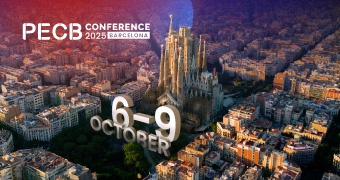As industries continue to adapt to new technologies, regulations, and market de....
Reducing Energy Costs With ISO 50001

Lights off, temperature down, and shorter showers. The energy crisis and the newest energy-saving resolutions have impacted the lives of everyone. But what can we do to reduce energy consumption? We, as individuals, and more importantly we as organizations.
As the energy sector has been facing serious challenges for some time now, it is necessary for all types of organizations to improve their energy performance and cut their energy costs. A framework that can come in really handy to them is ISO 50001 Energy Management System standard. This standard assists in integrating energy efficiency into management practices and committing constant improvements in energy management.
Energy crisis in 2022
The world, and especially Europe, is experiencing a global energy crisis, and the situation is getting worse. The energy landscape is very complex and is dependent on many factors. Geologic and environmental conditions are known to affect it a lot, just like many changes in technology and political factors do.
Another factor that recently has been concerning most of the world a lot is the gas shortage. As a result of the gas shortage, gas prices have been rising in many parts of the world, reaching high records. Moreover, the energy crisis could lead to blackouts, factories going out of business, and the economy going into a deep recession.
The energy crisis is hitting countries with different ranges of economic development and the attempt to reduce the consumption of energy coming from scarce and hazardous resources has grown worldwide. Many states have already started to take action and develop new policies and regulations in order to reduce energy consumption and avoid this winter’s energy crisis.
For example, in the European Union, Germany will limit heating in public places to 19°C and France has ordered shops that use air conditioners to keep closed doors or they risk a 750 Euro fine. Others have also taken similar actions by limiting cooling or heating temperatures, turning off unnecessary lights, or switching off illuminated advertising at night.
Reducing energy consumption in the workplace
The energy crisis has affected workplaces all over the world. For many, energy represents one of the highest operational costs, which leads many managements to seek energy-saving strategies.
The energy consumption varies between industries and it depends on the company’s activities. Since energy costs are often hard to handle and government decisions on the prices and policies related to energy cannot be controlled, the best option is to try and reduce energy costs in order to improve down the line.
The demand for energy has increased worldwide, as did prices along with it. Reducing energy costs does not only benefit the direct implementers but can also have a social and environmental impact.
Big corporates have started implementing sustainable energy management programs even before the recent crisis. For example UPS and JPMorgan Chase have been practicing corporate energy reduction by investing in new better technologies, increasing their productivity by consuming less energy, reducing gas emissions, and overall energy consumption.
What is ISO 50001 Energy Management System?
Energy Management System is a framework that helps energy consumers to manage their energy use and improve energy performance. ISO 50001 Energy Management System (EnMS) is a globally known standard that enables them to identify, adopt, and improve energy-saving technologies and policies.
ISO developed the ISO 50001 standard to support organizations of all sizes and sectors in addressing energy-related issues by providing practical ways to efficiently manage energy. This standard is based on other continual improvement management systems like ISO 9001 and ISO 14001, making it easier to integrate it and improve overall management.
How to reduce energy costs with ISO 50001
ISO 50001 EnMS, enables organizations to manage their energy more effectively and sustain their energy savings. The main purpose of an EnMS is to establish policies and procedures for systematically tracking, analyzing, and improving energy efficiency.
Those implementing energy management systems will remain competitive due to the reduction in their costs. Growing energy demand will make energy management crucial for a sustainable business, and as such the need for qualified personnel to implement and audit ISO 50001 will keep increasing.
Main steps of ISO 50001 implementation
ISO 50001 Energy Management System is quite a complex process that requires the completion of many steps and procedures.
The main steps of ISO 50001 are:
- Analyzing – The first step of ISO 50001 implementation is analyzing the internal and external context of the organization, determining boundaries, and deciding what is important and what activities your organization needs to focus on.
-
Planning – After analyzing the context of the organization, the next step is to plan and establish objectives and goals. This step is used also to review the energy use and understand the energy consumption, different types of it, how it is distributed among various activities, and determine other factors influencing the consumption.
Furthermore, during this phase, organizations also identify opportunities for energy consumption improvement, establish the baseline period for the new plans, and evaluate the costs versus the benefits of the new investments. - Managing energy consumption – During this step, organizations establish appropriate operational criteria and policies to achieve the objectives. They collect all the necessary resources to manage energy consummation in the best way possible. Another important process of energy management is staff training.
- Monitoring – To measure the effectiveness of an energy management system is important to track, measure, and evaluate its performance daily.
- Improving continuously – ISO 50001 recommends that organization evaluate their performance and after doing so they try to seek new ways for improvements and integrate new energy solutions.
Benefits of ISO 50001
Not long after being published, ISO 50001 has become the most commonly used standard for energy management. This is due to its many benefits and advantages.
Benefits of implementing ISO 50001 include:
- Reduction of energy consumption and carbon emissions in a systematic way
- Management of energy assets
- Management of energy resources
- Implementation of new energy efficiency technologies
- Improvement of decision-making
- Raises the awareness of employees on energy matters
- Compliance with legal and regulatory requirements
- Provides an energy efficiency framework throughout the supply chain
- Permits integration with other management systems such as environmental, quality, and health and safety
PECB’s ISO 50001 Energy Management Systems Training
PECB training courses on ISO 50001 enable professionals to gain the expertise, skills, and competencies needed to implement an effective energy management system. Using both a theoretical and practical approach for qualitative education, professionals can learn a lot about ISO 50001. They will learn more about the relation between ISO 50001 and other standards and regulatory frameworks, will master ISO 50001-related concepts, methods, and techniques, will learn how to fit ISO 50001 requirements in the context of their organization, and how to help their organization and its overall implementation.
About the author
Vlerë Hyseni is the Digital Content Officer at PECB. She is in charge of doing research, creating, and developing digital content for a variety of industries. If you have any questions, please do not hesitate to contact her: content@pecb.com


